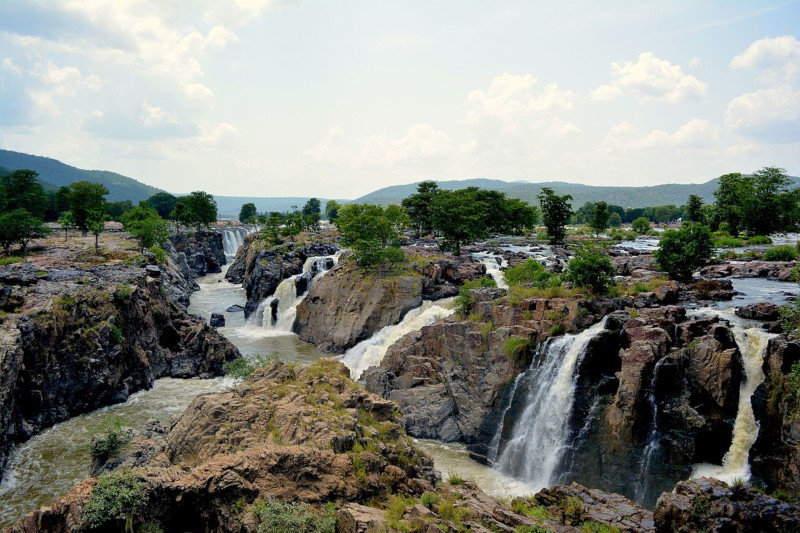
Hogenakkal Falls Facts
- Remarkably, the incredibly stunning natural formation known as Hogenakkal Falls represents a particularly distinctive and ruggedly beautiful waterfall. In the primary language of the region this hard to pronounce name means smoking rock.
- This magnificent example of the variety of nature also goes by another name, however. That’s because local inhabitants also refer to it as Marikottayam. This site has also long played an important role in the culture and life of the inhabitants of the region.
- For starters, that’s because of the fact that it has long served as a site for bathing. The amazing site also now plays a relatively vital economical role in the area. This holds true due to the fact that the waterfall now constitutes a popular tourist attraction.
- The fabulous Hogenakkal Falls also holds yet another role of importance in the area in which it formed. The site therefore has far more to offer the local population than just its scenic value. This occurs because of a proposal made by the local government.
- Under this proposal, the falls, sometimes called the Niagara Falls of its region, would also provide an invaluable service. Its flow would be used as a source of much needed drinking water for the inhabitants of the immediate area surrounding the falls.
Related Articles
Hogenakkal Falls Physical Description
Perhaps most notably, the breathtaking Hogenakkal Falls has a truly unique structure to it. In this manner, this fascinating site immediately distinguishes itself from the majority of other waterfalls to be found throughout the world, for more than just beauty.
That’s because, instead of a simple plunge, or group of plunges, it has a different construction. That’s due to the fact that it actually consists of a series of channels of varying sizes. These remarkable structures further total 14 in all, each with a different pattern.
That’s because the drop in height for each channel remains different from the others. In point of fact, these vary quite significantly in terms of height. Some of them drop no more than 15 ft (4.6 m). Others, however, have a drop measuring as much as 65 ft (19.8 m).
The most distinctive feature of the remarkable Hogenakkal Falls nevertheless remains a highly unusual one. That’s the very rocks through which it flows. That’s holds true due to the fact that these unusual formations have a fascinating composition.
Composed of carbonatite, these play an important role in the distinctiveness of the site. This holds true due to the fact that these structures are some of the oldest rocks on the continent. This nature only serves to further augment the splendor of the feature.
Hogenekkal Falls Location, Source, and Importance
The supremely mesmerizing natural formation known as Hogenakkal Falls formed in an area of the world that remains well known for its incredible natural beauty. That’s due to the fact that the cascade formed in what now constitutes the country of India, in Asia.
More precisely, the remarkable waterfall sits about 79 mi (127 km) from the city of Bangalore in Karnataka. Located in the southern portion of the country, the incredible cascade further formed on a section of the Kaveri River, itself a site of natural beauty.
The exact spot on which the stunning work of Nature sits holds yet another surprise for people. It actually borders two separate districts of the vast country. The two distinct areas within whose boundaries it lies are the districts of Chamrajnagar and Dharmapuri.
The locally important river itself also originates near a site known as Talakaveri. This particular location has long been considered a holy site by the local populace, and sits in the Western Ghats. From there, it quickly gathers force as it drops in elevation.
Highly numerous small tributaries also add to its volume as it flows downward. This continues, in fact, until it reaches Hogenakkal Falls. Along the way another trait manifest. The flow of the water after the cascade carries large quantities of sediment downstream.
As it deposits this, it serves to make the land more fertile, allowing for the successful growing of crops. Further on, it spreads out over numerous sandy beaches. Finally, it reaches the Mettur Dam, and forms the Stanley Reservoir, built in the year 1934.
Features Sharing Its Region
Check out our other articles on 5 Amazing Galapagos Islands Species, Arapaima Leptosoma, Onyx River, Venus Flytrap, Marbled Cat, Coral Pink Sand Dune Beetle, Plumed Basilisk
